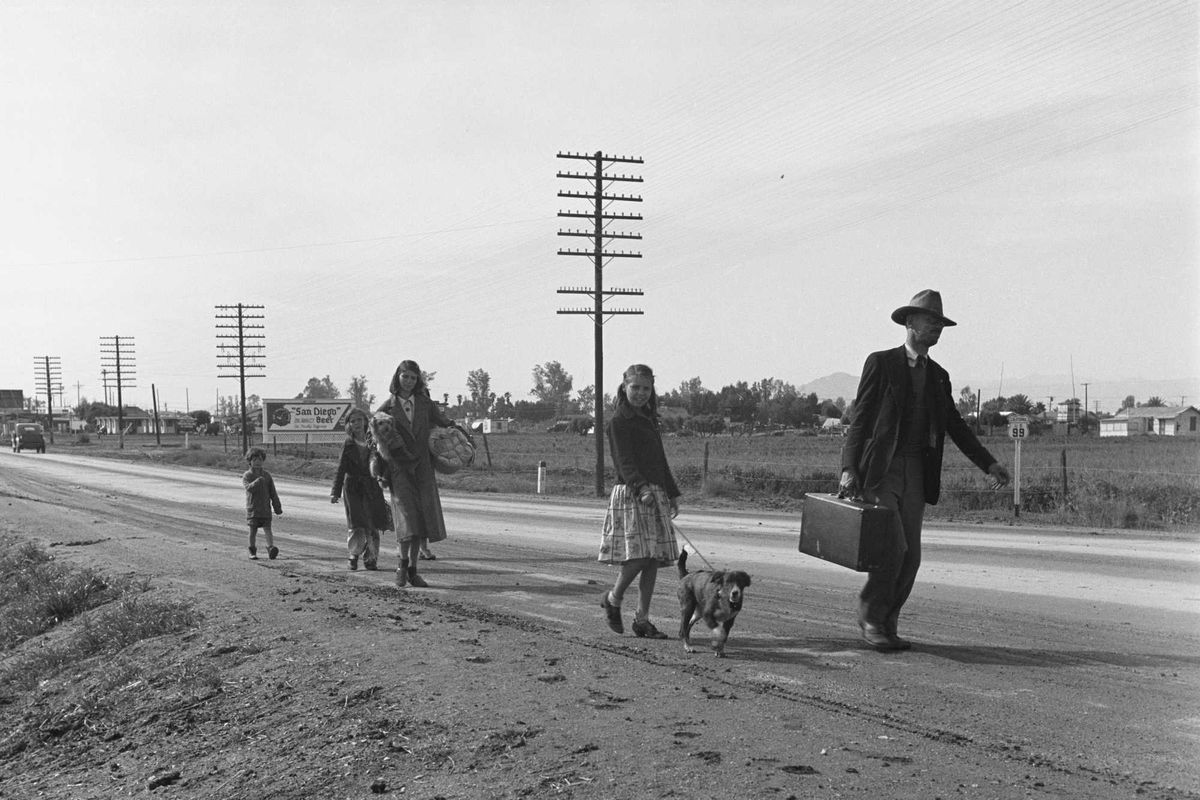17 Gen X memes for the generation caught in the middle
Gen X is so forgotten that it's become something of a meme. Here are 17 memes that will resonate with just about anyone born between 1965 and 1980.

Boomers, Millennials, and Gen Z
"Generation X" got its name in the early '90s from an article turned book by Canadian writer Douglas Coupland. And ever since, they've been fighting or embracing labels like "slacker" and "cynic." That is, until Millennials came of age and all that "you kids today" energy from older generations started to get heaped on them. Slowly, Gen X found they were no longer being called slackers...they weren't even being mentioned at all. And that suits them just fine.
Here are 17 memes that will resonate with just about anyone born between 1965 and 1980.
Gen X basically invented "Whatever."
 SOURCE: TWITTER
SOURCE: TWITTER
Until recently, Generation X has been sitting back and watching as Millennials and Boomers eat at each other with an amused, non-confrontational attitude. But recently, Millennials and Gen Z became aware of their presence, and dubbed them "The Karen Generation."
They seem to be embracing the Karen thing.

SOURCE: X
While I'm pretty sure the "Karen" thing is not complimentary—as BuzzFeed puts it, it's meant to communicate someone who is "the middle-aged white mom who is always asking for the manager and wondering why kids are so obsessed with their identities,"—lots of people landed on a different Karen to represent the generation: the martini-guzzling, wise-cracking Karen Walker.
Get it right!

SOURCE: X
Well [expletive] me gently with a chainsaw, she's right. The 1980s cult classic starring Winona Ryder and Shannen Doherty really is the Mean Girls of the '80s and a much better term than Karen.
The disdain is mutual...

The Breakfast Club
SOURCE: X
Most of my Gen X friends have Gen Z kids and they are intergenerationally very chill with each other. However, Gen X is the generation most likely to have Boomer parents and younger millennial kids, and this meme seems to be resonating a bunch with Xers of a certain age.
A lot of Xers are enjoying the "OK boomer" squabble.

SOURCE: X
The media tends to ignore Generation X as a whole—as a few tweets coming up demonstrate—and that's nothing new. After all, they're used to it. They were latchkey kids whose parents both worked long hours, so they're used to being somewhat neglected.
"No one cares what we think anyway..."
This GIF of Janeane Garofolo mocking her classmates at the high school reunion is basically a whole Gen X mood and definitely captures how a lot of this generation caught in the middle feels about the "OK boomer" wars.
A whole mood.

SOURCE: X
Gen X: "Look, don't pull us into this. You'll make me spill my beer."
Gen X: Get used to it.

SOURCE: X
Perhaps Gen X's blasé attitude to the generation wars has something to do with being called "Slackers" for a full decade.
Pass the popcorn.

SOURCE: X
Aside from this whole "Karen generation" blip, Gen X continues to be largely overlooked, and that fact—as well as their silent delight in it—is possibly one of the most Generation X things to happen.
Pay no attention to the man behind the venetian blinds.

SOURCE: X
Back in the '90s, Gen X bore the same kind of criticism Boomers tend to heap on Millennials and Gen Z now. It's not necessarily that they want to watch a cage match. It's just they're so relieved the heat is aimed elsewhere.
See?

SOURCE: TWITTER
Although this chart doesn't list the generation names, the approximate age ranges are all there...except for a big gap between the ages of 35 and 54 where apparently no humans were born? Poor Gen X (and some elder Millennials) apparently don't have political beliefs worth examining.
Don't you forget about me...

SOURCE: X
If Millennials are the "burnout generation," I guess Gen X is truly the invisible generation. I'm starting to feel inspired to write a science fiction novel where everyone born from 1965 to 1980 inhabits a totally different dimension.
There are perks to being invisible...

SOURCE: X
Being overlooked can be an advantage when you just want to sit in the corner and be immature.
Party on.

SOURCE: X
Before Brené Brown was telling us all how to dare greatly, Gen X got their inspirational advice from a different kind of Ted and his pal Bill, who taught us all how important it is to learn from history and be excellent to each other.
Too late and yet too early.

SOURCE: X
Romance—or getting lucky—was never easy for Generation X. They were the generation most impacted by the AIDS epidemic when it comes to anxiety about casual sex. Whereas Boomers had the free love of the late '60s, Gen X was about safe sex, which usually meant less sex. And even when having safe casual sex, singles in the '90s had to meet people the old-fashioned way or, if they did meet online, they felt shame over it. Now online dating is the norm.
When Gen X replaces the Boomers.

SOURCE: X
This is probably an optimistic view—because the truth is there are "Boomers" in every generation, and many of them tend to find their way into powerful positions. Let's call this a best case scenario, though.
The Nihilism Generation

SOURCE: X
There is no generation more over it than Gen X. They are ready for the apocalypse, but don't expect them to, like, help or anything!
Now we have Generation Alpha to contend with, so let's hope they're more chill about the generation wars than their predecessors. And as of 2025, an even newer generation is starting: Generation Beta. Hopefully, the fighting will have died down.
This article originally appeared five years ago.
- Fox News asked Gen X to 'stop cancel culture' and the responses ... ›
- Millennials and Boomers may freak out over social distancing, but ... ›
- Gen X is the 'most stressed' generation alive but they're also the best ... ›
- TikTok dad shares his 80s childhood and it's pure GenX - Upworthy ›
- People born between Gen X and millennials demand recognition - Upworthy ›
- TikTok dad shares his 80s childhood and it's pure GenX - Upworthy ›
- Scary Halloween decorations - Upworthy ›
- Gen Xers welcome Millennials to "the club" - Upworthy ›
- Things Gen Z wouldn't like that were normal for millennials - Upworthy ›
- Neighbor asked woman to remove 'morbid' Halloween decorations because of dying family member - Upworthy ›
- Gen Xer explains 'garbage bag' costumes - Upworthy ›
- Millennial doesn't understand Gen Alpha slang - Upworthy ›
- Gen X mom went to therapy after son gave ultimatum - Upworthy ›
- Things people under 25 will never get - Upworthy ›
- The 'Let Them' theory - Upworthy ›
- 'Dazed and Confused' math meme is blowing Gen X's mind - Upworthy ›
- Sales guru notices a high performer in 10 seconds - Upworthy ›
- Video about Gen X getting older hilariously hits home - Upworthy ›
- What is 'Generation Jones'? The unique qualities of the not-quite-Gen-Xer - Upworthy ›
- Man shows what it's really like to road trip with an Xennial - Upworthy ›
- Comedian rips aging millennials with indie anthem parody - Upworthy ›
- 42-year-old millennial shares the 'best' thing about getting older - Upworthy ›
- Gen X parents who 'roamed free' as kids challenge Millennial parents' 'constant stimulation' - Upworthy ›



 Meatloaf was a staple dinner.
Meatloaf was a staple dinner. Spaghetti is still a classic.
Spaghetti is still a classic. Why were pork chops so popular?
Why were pork chops so popular?
 A chart breaks down how much Costco workers make.Image via Bandana.com, Reddit/workwisejobs
A chart breaks down how much Costco workers make.Image via Bandana.com, Reddit/workwisejobs

 Worried
Worried 